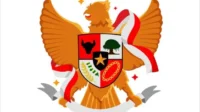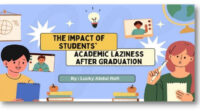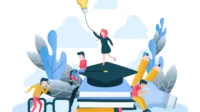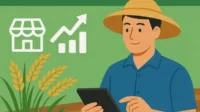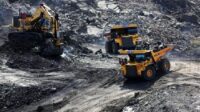Introduction
The waste problem is one of the serious problems that occurs today for every person in society. How could it not be, that humans as waste producers are unable to overcome this problem due to their behaviour of disposing of waste in the wrong place. One of the wastes that pollutes the environment today is plastic waste. Plastic objects are single-use items with irresponsible post-consumption activities. Plastic waste that is disposed of carelessly can cause blockage of sewers and water bodies, be eaten by fish, damage ecosystems in rivers and seas such as coral reefs, and produce high carbon emissions into the air. As is known, plastic waste, which began to be used about 50 years ago, has now become an inseparable item in human life. It is estimated that the number reaches 500 million to 1 billion. Plastic objects are made from a processed gas and oil called ethylene; where this plastic is estimated to take 100 to 500 years to decompose completely.
Plastic wastes in the form of microplastics become pollution and pollute the environment which has an impact on biodiversity, the climate crisis, and human health. The first reason, plastic is a foreign object for microorganisms. To break down waste, enzymes from bacteria or microbes are needed as microorganisms in the soil or waters which function to accelerate the decomposition reaction of waste into compounds or basic elements that can be absorbed and do not interfere with the function of the soil or waters. Meanwhile, plastic is a type of synthetic polymer material whose compounds and structure are not recognized by microorganisms in both soil and water. So, microorganisms have difficulty breaking down plastic because they don’t have the right enzymes to break it down.
Indonesia is the second largest producer of plastic waste in the world after China. This situation should be a serious problem because the sea is one of Indonesia’s producers of natural resources. If the sea and the natural resources in it are damaged, the next generation will not be able to feel the results of abundant natural resources anymore. One of the biggest contributors to plastic waste in Indonesia is the city of Ambon, Maluku province.
The problem of rubbish in waters, including in Ambon Bay, is a common problem in many coastal areas throughout the world. Garbage that pollutes waters can damage the marine environment, threaten marine life, and hurt ecosystems and human health. Plastic waste is not only still visible but also floating sea water and is spread along the coast of Ambon Bay. As a result, three types of ecosystems and populations of globally rare marine species in Ambon Bay are threatened with extinction. The three ecosystems of Ambon Bay are coral reefs, ditches, and mangroves. Currently, the rarest biota in the world consists of animals that can be seen with the naked eye.
SDGs No. 14 is presented as a problem solution that aims to “produce healthy and productive underwater life.” This includes efforts to reduce pollution and plastic waste in the sea. We chose this topic because the relationship between SDGs No. 14 and the amount of waste in Ambon Bay is that the accumulation of waste in the waters, as is happening in Ambon Bay, directly reflects failure in achieving the sustainable development goals. Accumulation of rubbish in the sea can damage marine ecosystems, endanger marine biota, and cause public health problems. This also contributes to environmental pollution and loss of marine biodiversity. Therefore, to achieve SDGs No. 14, serious efforts are needed to reduce waste in waters, including in Ambon Bay. This involves concrete actions such as improving land waste management, reducing the use of single-use plastics, encouraging recycling, and increasing public awareness about the importance of keeping the ocean clean. Therefore, maintaining a healthy and productive marine environment is an integral part of achieving SDGs No. 14 and becomes relevant in the context of the large amount of waste in Ambon Bay.
Contents
The density of plastic waste in Ambon Bay is still a serious dynamic that is reviewed to this day considering that the accumulation of waste in the waters has the potential to damage the existing ecosystem. One of the causes with the biggest analysis is the lack of awareness of local communities regarding waste management and disposal. Data shows that the people of Ambon do not yet have an awareness of protecting the environment, which is shown by the people’s habit of continuing to throw rubbish carelessly. The increase in the amount of waste, especially plastic waste in Ambon Bay cannot be separated from the results of the local community’s disposal every day. This lack of public awareness of the environment is also influenced by existing human resources, as seen from the people’s habit of saying that throwing rubbish into rivers is a very easy way other than burning existing dry rubbish, even though both have a big impact on both the environment and health.
In this case, the community’s mindset must be immediately addressed by both the local government and activists. Over the last 20 years, the increase in plastic waste flowing into Ambon Bay has become increasingly uncontrolled, this has resulted in explosions of the dangerous algae type “Pyrodinium Bahamense” once reaching more than 10 million cells per liter; which originates from people’s plastic waste. The occurrence of this explosion is very risky for the people around Ambon Bay, considering that this bay leads to 29 large and small rivers around related settlements. Trash dumped by residents who occupy coastal areas and rivers will flow into the sea of Ambon Bay in a matter of minutes, especially if it rains, we can see how the colour of sea water in Ambon Bay changes.
Baca Juga: Mahasiswa UIB Gelar Pasepro EduGreen 2022: Milenial Perangi Sampah menuju Zero Waste Society
The pollution of the marine ecosystem in Ambon Bay also has an impact on the condition of the surrounding mangrove forests, where the mangrove forests already look dry and dead due to sea water being polluted with a mixture of mud and liquid from existing plastic waste. This situation is very worrying because the presence of mangrove forests is very beneficial for areas around the sea, both in terms of biological and economic benefits, but every day it is increasingly being degraded due to the pollution that occurs.
The Indonesian Institute of Sciences (LIPI) stated that the density of domestic waste, especially plastic waste in the inner Ambon Bay, has increased in the last 20 years. Research results show that there is a considerable accumulation of domestic waste in Ambon Bay. Much of this plastic waste is floating in several locations in Ambon Bay. The largest abundance was in the area near Mardika and Galala markets, with an abundance of more than 51 types of plastic waste. The percentage of waste abundance in eight beach locations in Ambon Bay was highest in Poka Village (47.42%), followed by Hative (17.04%), Kate-Kate (11.73%), Waiheru (9.28%), Tawiri (6.9%), Lateri (4.34%), Halong (2.49%) and Passo Village (0.78%).
By 2022, the plastic generated by Ambon City, especially in Ambon Bay, will reach 220 tons per day. This number is very large considering that the increase in population affects the amount of plastic waste produced. In fact, in previous years, based on BPS Maluku statistics, the plastic waste generated was not as much as in 2022. Even during the Covid-19 pandemic, plastic waste in Ambon had dropped to 10 tons per day. The plastic waste was then dumped into Ambon Bay. Research conducted by the Indonesian Institute of Sciences (LIPI) Ambon, revealed that 70 percent of waste in Ambon Bay is dominated by plastic waste. The plastic waste in question is mostly in the form of mineral water bottles and straws. This means that Diver Clean Action’s research stating that almost 90 percent of marine debris contains plastic and at least eight million tons of plastic pollute the world’s oceans every year is true.
For Ambon City, for example, there were two cases of sunfish death. The latest case was found in Poka Beach; from the results of the initial dissection by academics from the Faculty of Fisheries and Marine Sciences, Pattimura University Prof. Dr. J.J Mosse found plastic waste that was already black. It is suspected that the plastic waste contained in the bile could not be digested properly so the waste rotted in the fish’s bile. The plastic waste that caused the death of the fish was a land object that was thrown into the sea.
After that, many programs have been created to manage plastic waste, to the point where many volunteers from other countries such as Netherlands and Germany have come to Ambon just to help clean up plastic waste in Ambon Bay. However, a lot of plastic waste is stored in TPA Toisapu and ultimately dumped into the rivers that flow into the Ambon Bay area, due to the open dumping system without any further management. Then, the limited cost of managing plastic waste is a factor that slows down the process of integrated waste management. Therefore, investors are needed to build environmentally friendly plastic waste processing factories. The Ambon local government is also building a partnership with PT Million Limbah Ambon recycling plant to process 100 to 150 tons of plastic waste every month (equivalent to recycling four to six tons per day) as a solution to reduce the impact of plastic waste in Ambon Bay. The recycling plant will process plastic waste that has been sorted and cleaned into plastic ore to be sent to Java Island and then reprocessed into plastic products.
The Ambon local government through Dinas Kelautan dan Perikanan Maluku also has moved to overcome this plastic waste to promote a sustainable bay; by making some sub-districts around Ambon Bay (including Poka Village) the location of the National Movement of the Sea Love Month (BCL) on August 2023, in the form of Clean Beach and Underwater activities. The local government of Ambon deployed 78 divers to clean up the sea in Ambon Bay, especially Poka Village (the plastic waste collected from seven rivers). They managed to collect 3 tons or 3,296.8 kilograms of waste from Ambon Bay. The 3 tons of plastic waste were divided into 1,050 kilograms of marine debris and 2,246.8 kilograms of land or beach debris. In the city of Ambon itself, it has begun to limit the use of plastic bags in various supermarkets or at formal government events.

To address the various impacts caused by waste in Ambon Bay and targeted involvement of environmental NGOs, Ambon local government is collaborating with Green Moluccas in arranging various actions to resolve this environmental problem. Green Moluccas is an environmental care community that is driven by a call for action for the environment and the earth. In this case, Green Moluccas has several activities that have been carried out in the last few years, for example, the Ambon Hijau Waste Bank Action which has been carried out since 2019. This activity is intended to manage waste into something that produces economic results through a waste savings system by customers who are local residents. The types of waste collected by Green Moluccas are plastic bottles, disposable plastic cups, copper, brass, iron, aluminium, blue and mixed bottle caps, duplex (food paper), magazines, cardboard, HVS and genes.
The lack of public interest and sensitivity towards plastic waste moved Green Moluccas to create a waste savings system for various categories from children, the general public, and corporations to encourage people to care for and collect their waste to get “money” from their waste savings. The public also does not need to spend time dealing with waste management because Green Moluccas and the government provide waste pick-up facilities per specified period for each surrounding area, so the public only needs to wait for scheduled pick-up and payment of waste savings.
The categories of this Waste Bank include plastic, copper, brass, paper, and other recyclable waste. This action was welcomed by the community and contributed to reducing the pile towards the Gulf, although still by a small percentage. Another action carried out by the local government together with Green Moluccas is the maintenance and adoption of damaged mangroves in Ambon Bay. The local government is aware that the existence of mangroves around the Bay has an important function for the surrounding community, especially in reducing the risk of coastal erosion, so they are being maintained again for long-term benefits in the future. Mangrove adoption and care is also open to the general public (both from outside Ambon) who are willing to act as adopters or donors of the required care costs. Apart from that, the local government to provide regular outreach and assistance regarding good waste management that does not harm the environment to the local community. It is hoped that this will be a bright spot for improving the situation in the Gulf and the Ambon Sea coast.
The youth generation in Ambon also has an important role in reducing the problem of plastic waste in Ambon Bay as a form of realization of SDGs No. 14. The youth account for 35% of the total population in Ambon. They can be agents who care about the environment, especially being free from plastic waste. The youth in Ambon contribute in promoting social movement action against plastic waste, through Moluccas Coastal Care. The program was carried out to provide space for Ambon youth to raise awareness of the cleanup of plastic waste that is still scattered and polluting the bay of Ambon. The Ambon youth played a role in installing trash traps along Galala Beach, Ambon Bay area, and building mangrove protection nets in Poka village. The activities carried out by the youth in Ambon paid off, with 8.25 tons of waste collected within two hours. In 2023, the youth of Ambon from Moluccas Coastal Care carries the theme “Beat Plastic Pollution”, by planting 500 Mangrove tree seedlings to help maintain the stock of water discharge from plastic waste pollution in Ambon.
Education to be free from plastic waste is an important action for millennials in Ambon City given the geographical condition of Ambon City which is a small island. Education in the form of a “dispose of garbage in its place” campaign to the local community, for example, can minimize the disposal of plastic waste into the sea. Then, youth in Ambon can utilize social media as a means of education by creating content as interesting as possible about reducing plastic waste; even if only in small things such as throwing garbage in its place, being wise in using plastic, reducing the consumption of glass or bottle mineral water by using a refillable personal drinking bottle (tumbler), replacing plastic with safer alternative materials and reprimanding those who are still indifferent to the environment. With these small things they have contributed to freeing Ambon Bay from plastic waste.
In addition, the youth generation in Ambon who have talents in the arts or have creative and innovative ideas can contribute to channelling their ideas to turn plastic waste into objects that have high selling value. This is an opportunity for the youth generation in Ambon to apply the 3Rs (reduce, reuse, and recycle waste). The 3Rs of turning waste into new, valuable items is also an option worth trying, such as recycling plastic packaging waste into various bags or flower vases.
Regarding the role and actions of the Ambon local government, Green Moluccas, and the youth in reducing the problem of plastic waste in Ambon Bay; then this is very closely correlated with realizing SDGs No. 14 “life below water”. Therefore, goal 14 of the Sustainable Development Goals is relevant to the waste case that occurred in Ambon Bay, where this goal aims to create and protect marine and coastal ecosystems from land-based pollution and raise awareness of the impact of ocean acidification. Strengthening the protection and sustainable use of marine resources through international law will also help address the challenges facing the ocean. The Ambon Bay pollution case can be assessed as the focus of this goal and a state and global obstacle to achieving this goal.
So, the problem of water pollution in Ambon must be addressed immediately, through the efforts of the government, the community, local activists, and global community, remembering that the SDGs are a system implemented by many countries. The resolution of the Ambon Bay pollution case can also be an example of achievement for the sub-targets contained in goal 14, such as managing and protecting marine and coastal ecosystems in a sustainability to avoid significant adverse impacts, including by strengthening their resilience and carrying out restoration to create healthy and healthy oceans. productive, as well as minimizing and overcoming the impacts of ocean acidification, including through better scientific collaboration at all levels.
Baca Juga: The Story of Plastic: Kebenaran Menyedihkan Dibalik Polusi Plastik
Based on the vision of Sustainable Development which will be realized in 2030, the waste case in Ambon Bay requires comprehensive and integrated waste management because waste is not only a local or regional problem but has become a national problem. Waste that is handled well will have an economic impact, people’s lives will be healthier, the environment safer, and people’s behaviour will change. This is following Article 28H paragraph (1) of the 1945 Constitution of the Republic of Indonesia. Waste is a commodity that is much sought after because it is people’s everyday waste, whether solid or non-solid, organic or inorganic, decomposed or not.
The increasing amount of waste that is disproportionate to the processing process is a source of environmental damage and pollution on a global scale. The author considers that the government and local activists need to impose stricter sanctions and regulations regarding waste disposal considering that no matter how many efforts and countermeasures have been designed, it will not have an impact if each succeeding generation continues the existing habit of throwing waste carelessly. To support various things in the future, the CCBO (Clean City Blue Ocean) program has recently been initiated in Ambon, as well as Ambon is the first city to implement this program which is expected to help manage waste in the future, in addition to taking action and imposing sanctions for policy violators designed waste disposal.
Conclusion
The waste problem in Ambon Bay has a significant impact on achieving SDGs Goals No. 14, which aims to maintain healthy and productive underwater life. The accumulation of rubbish in the waters of Ambon Bay reflects a failure to protect marine ecosystems and sustainable marine resources. By responding to the challenge of waste pollution in Ambon Bay, we can support global efforts in achieving sustainable development goals related to the sustainability of the marine and marine environment.
Sustainable recommendations for environmental problems caused by plastic waste require precise and coordinated action. First of all, it is very important to sensitize and educate people about water waste. Environmental campaigns and community engagement programs can help change behaviour and reduce plastic waste entering the sea. Second, the development of efficient waste collection systems, modern waste management facilities, increasing the number of waste banks in every village in Ambon, and the promotion of recycling. Third, companies and manufacturers must play a role in reducing the use of single-use plastic and creating more environmentally friendly products. Implementing sustainable product design and using recycled materials can reduce the amount of plastic waste that pollutes the ocean. Fourth, the development of wastewater treatment technology for plastic waste reduction, such as ocean cleaning methods and seaweed collection.
Another solution to reduce plastic waste in Ambon Bay is that the local government needs to utilize radiation technology which can be used in Nutec Plastic Recycling to target single-use plastic. The plastic will be processed and reshaped so that it can become a longer-lasting product. Radiation technology can play a role in processing plastic waste, which can be mixed with biomass waste, for example sawdust, wood dust, or oil palm fruit bunches. Then mixed into the wood plastic composite. Wood plastic composite is a construction material in the form of an adhesive between wood and plastic to strengthens the final product.
Thus, Maluku is known as an archipelago province with a sea area of 92.4% and has abundant potential for marine and fisheries resources, especially in Ambon. Through the existing potential, the Ambon local government needs to be better prepared to realize and implement the blue economy policy by strengthening collaboration with NGOs such as Green Moluccas and most importantly the youth generation, which aims to make Ambon Bay free from plastic waste. This collaborative action will bring Ambon City to be environmentally friendly and the processing of plastic waste will become an economic value that has a source of income in it.
Penulis:
1. Jason Fernando
2. Ezra Yora Turnip
3. Kezia Feradris
Mahasiswa Ilmu Hubungan Internasional Universitas Kristen Indonesia
Editor: Ika Ayuni Lestari
Bahasa: Rahmat Al Kafi
Ikuti berita terbaru di Google News
References
Aminah, A. N. (2021, June 21). LIPI: Kepadatan Sampah Plastik di Teluk Ambon Terus Naik. Retrieved from Republika.com: https://news.republika.co.id/berita/qv24fm384/lipi- kepadatan-sampah-plastik-di-teluk-ambon-terus-naik
BRIN. (2022, October 15). Atasi Sampah Plastik di Indonesia dengan Teknologi Nuklir. Retrieved from https://www.brin.go.id/news/110542/atasi-sampah-plastik-di-indonesia- dengan-teknologi-nuklir
Green Moluccas. (2020). Ambon Green Waste Bank. Retrieved from https://greenmoluccas.id/bank-sampah- ambon- Hijau/
Herdiansyah, H., Saiya, H. G., Afkarina, K. I. I., & Indra, T. L. (2021). Coastal Community Perspective, Waste Density, and Spatial Area Toward Sustainable Waste Management (Case Study: Ambon Bay, Indonesia). Sustainability, Vol. 13, No. 19.
Herman, W. (2022, September 18). Komunitas lingkungan bersihkan 3.891 kg sampah di Pantai Passo Ambon. Retrieved from Antaranews.com: https://www.antaranews.com/berita/3124709/komunitas-lingkungan-bersihkan-3891-kg- sampah-di-pantai-passo-ambon
Kumar, R., Verma, A., Shome, A., Sinha, R., Jha, P. K., & Vara Prasad, P. V. (2021). Impacts of Plastic Pollution on Ecosystem Services, Sustainable Development Goals, and Need to Focus on Circular Economy and Policy Interventions. Sustainability, Vol. 13, No. 17, 9963.
Luanmasar, I. E., Salakory, M., & Riry, J. (2022). Perilaku Masyarakat Dalam Pengelolaan Sampah Di Pantai Desa Rumahtiga Kecamatan Teluk Ambon Kota Ambon. Jurnal Pendidikan Geografi Unpatti, Vol. 1, No. 1, 27-37.
Mayaut, P. F. (2021, August 7). Green Moluccas Galakkan Adopsi Mangrove di Teluk Ambon, Jadi Inspirasi. Retrieved from Antaranews.com: https://ambon.antaranews.com/berita/104210/green-moluccas-galakkan-adopsi mangrove-di-teluk-ambon-jadi-inspirasi
Mayaut, P. F. (2022, January 20). Ambon Kota Pertama Implementasikan Program CCBO USAID. Retrieved from Antaranews.com: https://www.antaranews.com/berita/2654669/ambon-kota-pertama-implementasikan- program-ccbo-usaid
Mesfer, A. F., & Fataruba, S. (2021). Akibat Hukum Terhadap Limbah Sampah Plastik Di Teluk Ambon Berdasarkan Undang-Undang Nomor 18 Tahun 2008 Tentang Pengelolaan Sampah. TATOHI: Jurnal Ilmu Hukum, Vol. 1, No. 6, 554-563.
RakyatMaluku. (2023, June 10). PLN dan Relawan Angkut 8,25 Ton Sampah di Pantai Galala. Retrieved from https://rakyatmaluku.fajar.co.id/2023/06/10/pln-dan-relawan-angkut-825- ton-sampah-di-pantai-galala/
Saptenno, M. J., Saptenno, L. B., & Timisela, N. R. (2022). Faktor Yang Mempengaruhi Tingkat Kesadarana Masyarakat Pesisir Terhadap Pengelolaan Sampah di Perairan Teluk Ambon Kota Ambon. Jurnal Ilmu Lingkungan, Vol. 20, No. 2, 365-374.
Siwalima. (2023, April 17). Akankah Ambon Terbebas dari Sampah Plastik? Retrieved from https://siwalimanews.com/akankah-ambon-terbebas-dari-sampah-plastik/
Tuahatu, J. W., Noya, Y. A., & Manuputty, G. D. (2020). Plastic Pollution on the Beaches of Outer Ambon Bay. In IOP Conference Series: Earth and Environmental Science, Vol. 584, No. 1.



